
Next you will find out:
- Does non-surgical implantation of teeth really exist during which the implant is placed in the jaw without incision of the gum?
- What is actually understood today as non-invasive implantation and what the advertising of clinics is shyly silent about;
- What is express implantation and what advantages does it give in comparison with the classical method;
- Is it possible to implant implants through a puncture in the gum and what are the features of transgingival implantation;
- What method of dental implantation is still better and what is useful to know about prices.
Perhaps, from the very moment of the emergence of the technology of implantation of teeth and up to the present, there are certain myths associated with the fear of installing implants: it is generally accepted by default that this procedure is very painful and traumatic.Recently, however, references to the so-called non-invasive dental implantation are becoming more and more common, and it is claimed that implants are installed without a gum incision.
It looks very tempting, but is it plausible? After all, it would seem as possible: implants should be placed in the jaw bone, and above this bone there are soft gum tissue. And how, one wonders, can this dental implant be inserted into the bone without cutting the gum?
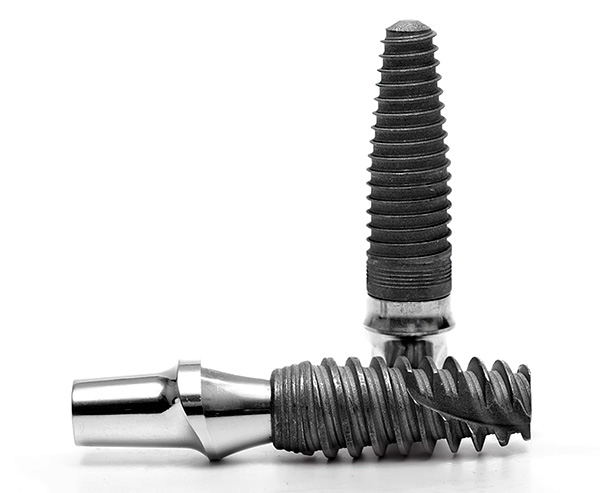
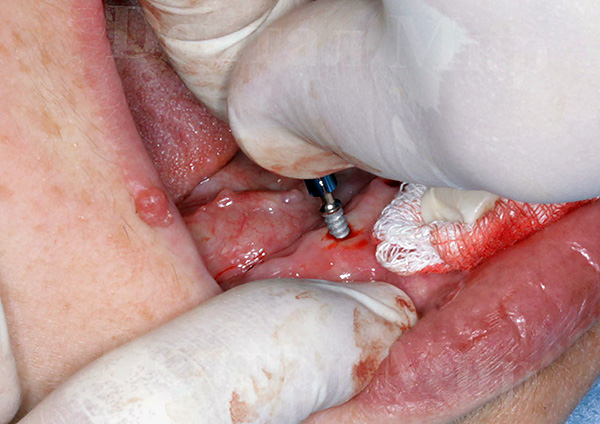
Let's try to understand all the intricacies of this problem, and see if there is an absolutely painless and non-traumatic non-invasive implantation of teeth, suggesting the complete absence of cuts in the gums and installing an implant in the jaw in some special way ...
Implantation of teeth without gum incisions: myth or reality?
Generally speaking, the so-called non-surgical implantation of teeth, that is, carried out without classical cutting of the gums, has many alternative names:
- Transgingival implantation;
- Minimally invasive;
- Seamless;
- Bloodless;
- Endoscopic;
- Laser.
Besides,In some cases, dental clinics may also use the following names when positioning “non-surgical implantation”:
- Express implantation;
- Momentary;
- Immediate;
- One stage.
It is important to understand that most dentists use the term “express implantation” (and similar ones from the second group) in order to characterize the process of installing dental implants in one visit, usually immediately after tooth extraction. That is, in this case, it is not necessary to cut something, because in the gum, after the patient's tooth is extracted, an open wound gapes, ready (although not always) to install the implant with fixation of the gingiva former on it.
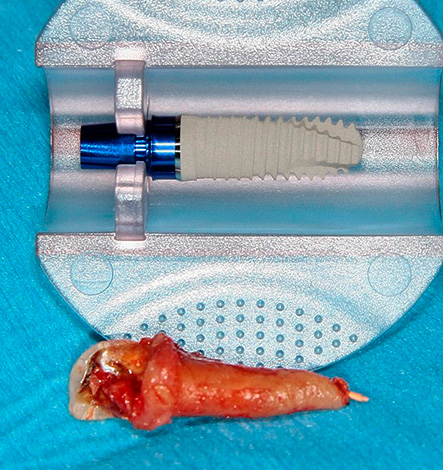
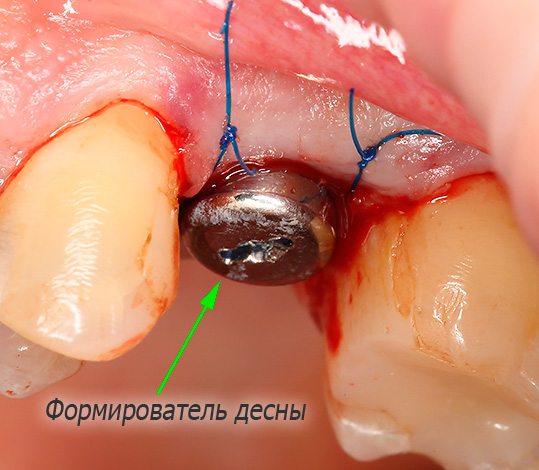
As for transgingival implantation - it, if you read the promotional materials, is performed through the so-called "puncture" of the gums. In fact, the real incision of the gum in the form of a circle is performed with the help of a circular mucotome. That is, although the advertisement says that implantation is non-invasive, and that, they say, is performed without a cut, but only through a “puncture”, however, strictly speaking, there is a small operation with a circular incision of the gum.
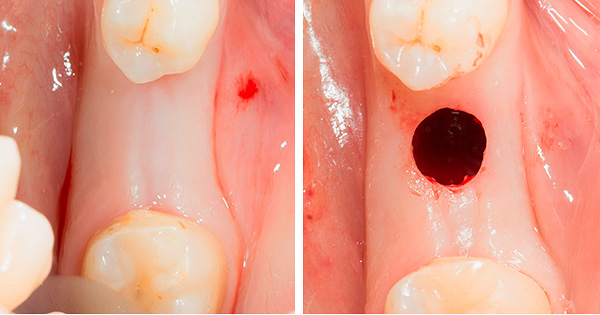
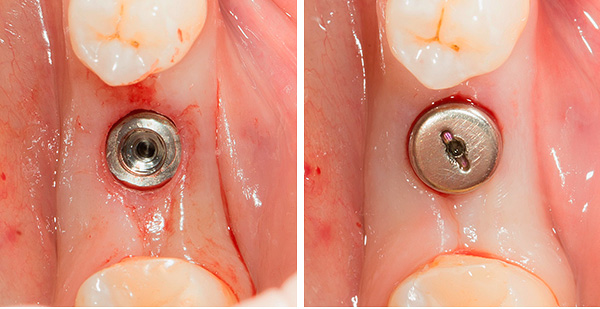
This is the beauty of advertising - if the cut is not a classic longitudinal, then why not call it a cut, and a puncture. After all, the "cut" - it sounds somehow scary, but the "puncture" - is another matter ...
On a note
However, regardless of whether dental implantation is performed “non-invasively” or according to the classical technology - in any case, today this process is not highly traumatic, and in most cases everything goes without terrible wounds and cutting out jaw pieces.
Do not confuse dental implantation with the most complicated surgical operations on the maxillofacial area after severe accidents and injuries, when doctors restore the patient's jaw, face and teeth literally by bits, like a puzzle.
The advantages of express implantation
Immediate implantation of the teeth (that is, immediately after the extraction of a diseased tooth) is becoming more and more popular every year. For some specialists in this field, the number of immediate implantations is 40-50% of the total amount of work, and the success of such operations directly depends on the professionalism of the doctor and the availability of the necessary equipment in the dental clinic.
Before we talk about the numerous benefits of immediate implantation, we once again recall that this process should be called non-surgical, as they say, “the language does not turn.” And yes - there may be no incision in the gums, since it is not needed, because the fresh hole of the tooth that was removed only by itself is often suitable for installing an implant without additional manipulations with a scalpel.
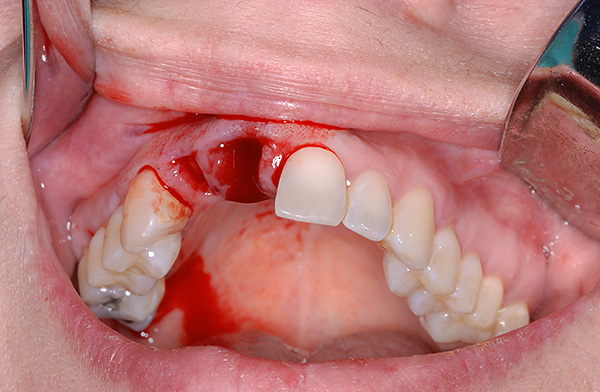
It is important to note the fact that not all and not all cases are suitable for such a single-step procedure. Example: suppose a patient for some reason would like to have implants installed immediately after the removal of teeth (advertising affected, acceptable cost, little time, etc.), and the doctor sees that there are signs of acute inflammation in the area of the tooth extraction . In this case, the success of the event, to put it mildly, is doubtful, and it is important for the doctor to explain this to the patient.
With a strong deficiency of bone tissue in the area of implantation on the background of severe periodontitis or periodontal cysts, it is also impossible to remove a tooth at a time and install implants (due to the direct contraindications to this procedure).
On a note
It may also be noted thatwhich are not associated with contraindications for immediate implantation, but are closely related to the presence or absence of appropriate equipment and instruments. Not all clinics have the right equipment, as well as not all doctors own the technology of simultaneous implant installation.
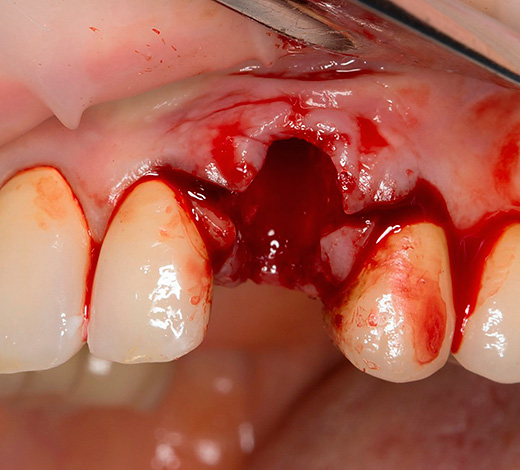
When there are no contraindications for immediate implantation, and the doctor has the necessary experience and technical support, the procedure gives significant advantages over classical implantation:
- In the case of simultaneous implantation, tooth extraction, implant installation and gum former take place in one clinic visit;
- Lower cost (including in connection with the above point);
- In the area of the tooth extraction does not have time to form a shortage of bone tissue due to the long absence of chewing load. So, to install the implant does not require surgery sinus-lifting (bone building);
- The success rate is about 99%;
- It is easier for the physician to adjust the implant in the space of a fresh well, which helps to correctly calculate and control the installation process, and this, in turn, has a positive effect on the final result and usability of future orthopedic structures (bridges, crowns, etc.).
Features of transgingival implantation and its stages
As already noted above, transgingival implantation of teeth is positioned today by some clinics as a technology for installing implants of teeth without cutting the gums, that is, through a puncture of the mucous membrane. What is such a "puncture" we have already figured out - in fact, in reality, a puncture is called a circular incision of the gums using a mucotome.
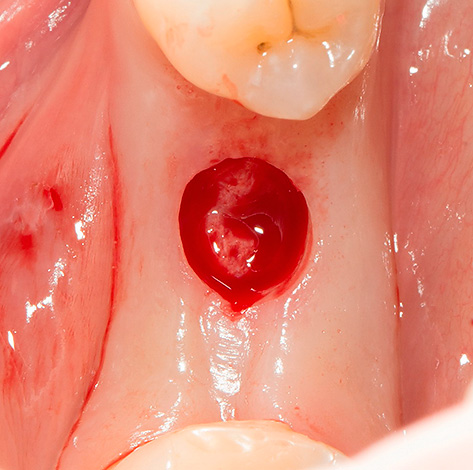
In contrast to the classical technique, with transgingival implantation, the damage to the soft tissues is less significant - the incision looks very neat, almost the diameter of the gum former implant installed on the abutment. That is, “an implant without an operation” is, of course, a myth and an advertising ploy, but it is quite possible to perform implantation with minimal trauma to the gum tissue.
On a note
The fact that the gum is minimally injured during “non-surgical” implantation does not at all exclude the need to drill the jaw bone using a sequential set of cutters. After all, the implant leg is a kind of titanium screw that needs to be literally screwed into the hole.
Accordingly, after making a circular incision with the mucotomy and removing the cut out gingival circle, a completely standard stage of preparing the hole for implant placement — expansion and deepening with cutters — follows.
If the installation of implants is carried out without special surgical patterns, then it consists of the following main stages, which are carried out on the same day:
- A circular incision is made (“puncture”);
- The hole expands to the desired diameter and deepens;
- This is followed by the installation of the implant and control of the depth of its introduction;
- After this, the gum former is inserted;
- In conclusion, the patient follows the recommendations prescribed by the doctor (antibacterial therapy, gentle regimen, etc.).
Feedback
“Six months ago, I learned from a friend that there are dental implants that can be installed immediately after the removal of teeth. Two teeth did not allow me to live, I had to go, although I was terribly afraid of even one type of drill. Everything lasted about 30 minutes, the teeth were generally quickly removed. Everything was done under the injection, so I just drove my eyes back and forth and did not feel pain. Installed implants instead of teeth, prescribed painkillers, an antibiotic and even small things.The gums ached a bit when the freeze was over, but in the morning everything was fine. After 4 months, the implants settled down, they made pretty crowns, so now I eat everything ... "
Oksana, St. Petersburg
Due to the low-impact transgingival implant insertion method, almost always 1-2 days after the patient’s follow-up examination, most of the appointments are removed. This is done if there is no pain, swelling, hanging temperature, etc. Compared with the classical implantation technique, the “non-surgical” (transgingival) method of implant introduction is characterized by a reduced likelihood of developing any complications (the smaller the wound, the less the likelihood of problems due to a bacterial factor).
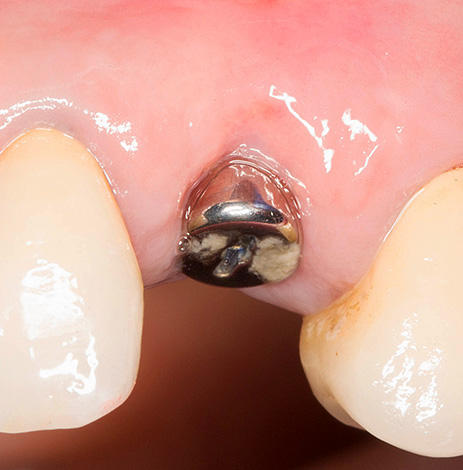
Speaking about non-surgical implantation of teeth, one should perhaps also mention intra mucous implantation, which is used to improve the conditions for fixing a removable denture. Intra mucous implants consist of two parts: the first is implanted into the thickness of the mucous membrane, and the second is mounted on a removable prosthesis (that is, these two parts of the implant work like buttons on clothes).Usually, 1-2 intra mucous implants are not enough for a stable retention of the prosthesis, and usually at least 10 are required.
After determining the thickness of the mucous membrane, mark the point where implants will be introduced - these points are in accordance with the protruding parts of the implant on the prosthesis. Then, when using local anesthesia with spherical boron, they make the necessary number of lodges in the mucosa, where the implants are installed.
Removable dentures on intramucous implants are worn constantly, and they are removed only for the hygiene of the prosthesis and the oral cavity.
Where the truth ends and advertising begins: the disadvantages of non-surgical implantation
Perhaps the biggest drawback of the so-called "non-invasive" implantation is, however paradoxical it may sound, too exaggerated advantages. Here it is necessary to explain a few very controversial moments from the point of view of medicine.
First, any surgical intervention associated with artificial tissue damage is considered an operation, even if it is performed in the most gentle way and without suturing.So cutting out a piece of gum and then drilling the jawbone is hard not to be called an operation.

Secondly, the implant installation method immediately after tooth extraction (if we speak about express implantation of teeth) is not suitable in all clinical cases. For example, it is impossible to carry out immediate implantation in case of acute inflammatory process, severe pain, swelling near the extracted tooth, as well as significant bone deficiency and inability to ensure the initial stabilization of the implant.
Moreover, even if according to tacit statistics, one-stage dental implantation can be carried out in 40-50% of cases from all requests, the doctor sometimes simply does not cope with this task. It's simple: it is not always the dentist-surgeon who manages to remove the tooth accurately (atraumatic), and as a result the “disfigured” hole is no longer suitable for simultaneous implantation. If the dentist will conduct such implantation, contrary to common sense and indications, then its success is minimal.
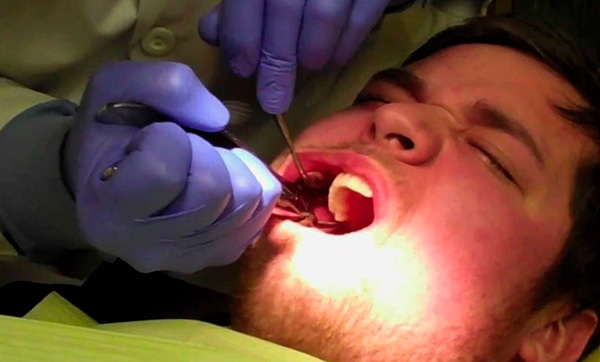
So, strictly speaking, dental implantation without cuts in the gums does not exist: it is necessary to cut the gums with something and somehow still. Another thing is that there are special tools that can make neat circular cuts, the diameter of which is minimal.
But there are also pitfalls here, and in a significant number of cases, transgingival implantation can be problematic for a number of reasons:
- The clinical situation is not fully known to the doctor (he sees the patient for the first time and has not led him before);
- Small volumes of bone tissue and mucous membrane;
- Atrophy of the alveolar ridge.
Equally important is the experience and qualifications of the doctor. The bottom line is that dental implants are not only tied to equipment and instruments, but also to the skill of the surgeon.
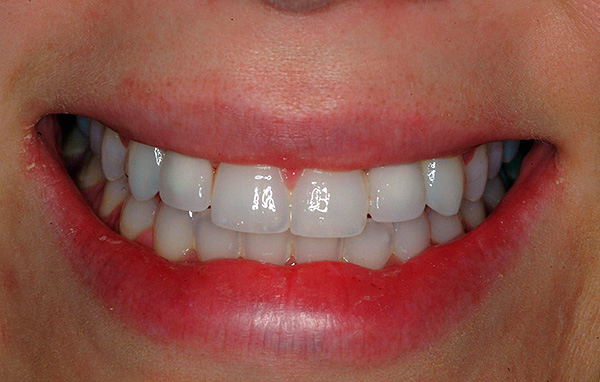
So what is the best method for installing implants?
In fact, there is no ideal dental implant technique. And to decide whether to choose a classic implant, “non-surgical”, basal or any other - preferably not based on advertising or reviews on the Internet (often also advertising), but in close cooperation with a good doctor whom you really trust. No such doctor in mind? Well, then, you need to find, and together with him to determine what is best suited exactly in your situation.
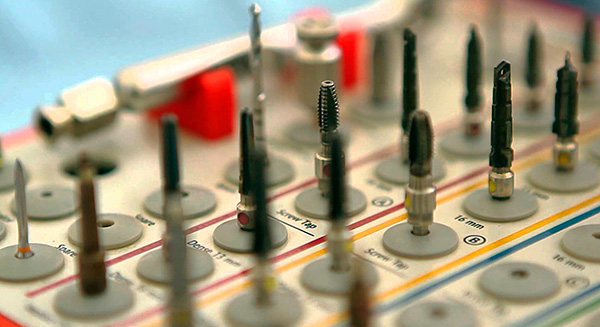
To pursue it for non-invasive implantation only because it doesn’t cause a gum incision, it makes no sense.
On a note
We should also mention the so-called laser implantation of teeth, which is positioned as a low-impact procedure. Whether a conventional scalpel or a laser scalpel will be used - a cut is still necessary. However, the use of a laser scalpel allows you to make a bloodless incision in the gums (and this is exactly the case when the term “bloodless implantation” is more or less correct).
Proponents of laser implantation rightly point out a number of advantages of this technology: neat cuts without blood, disinfection of the implant site, shorter wound healing and, as a result, reduced risk of complications.
A few words about pricing
The cost of dental implantation, including “non-surgical”, is influenced by many factors: from the level of the clinic, the type of implants used, and ending with the number of diplomas from an implantologist who will work with you. However, if the installation of implants is carried out in one stage (simultaneously with a tooth extraction), then this usually reduces the cost of the procedure somewhat compared to the classical two-stage implantation.
However, sometimes this rule may not work.For example, expensive surgical templates or 3D modeling may be required. Surgical templates are made according to the prints of the jaws and allow you to accurately plan the place to install implants, the depth of their immersion, etc. 3D modeling technology allows you to virtually plan the upcoming operation, taking into account its smallest details and significantly reducing the likelihood of medical error.
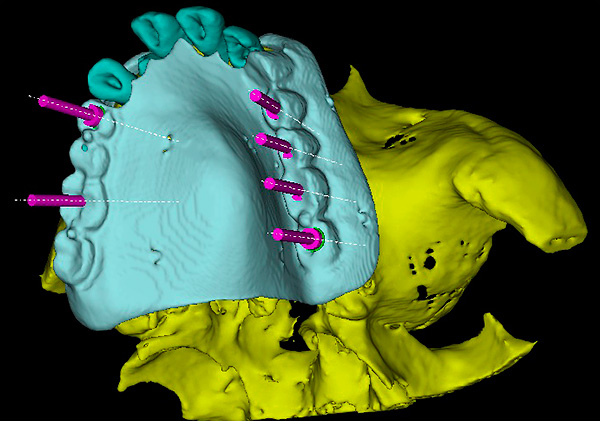
All these nuances contribute to the final price for implantation of teeth, and sometimes considerable.
In order not to overpay for unnecessary manipulations, you should always carefully and comprehensively examine the clinic where the implantation is to be, and trust a professional for whom more than one hundred grateful patients can vouch.
It is especially important to listen to the advice of your doctor regarding further tactics. If the implantologist does not recommend immediate or transgingival implantation, but offers a classic delayed procedure, then it makes sense to listen to the advice, rather than seek another clinic and another doctor who, in pursuit of commercial gain, will be willing to turn a blind eye to certain contraindications andassociated risks.
An interesting video - bloodless implantation is not so bloodless ...
How does the implantation of teeth
What are mini-implants and what are their benefits?

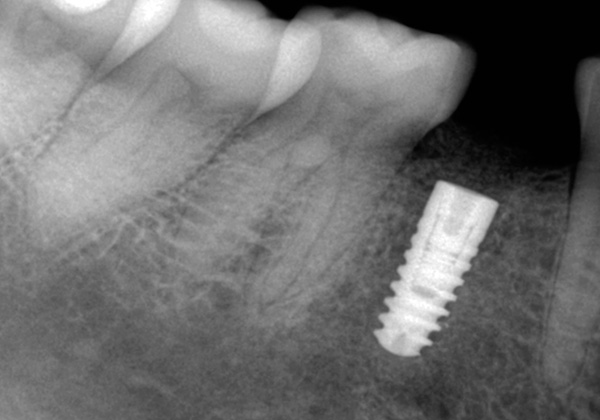
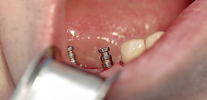
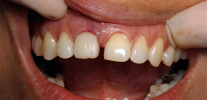
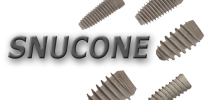
Hello.I would like to know, implants of any company are suitable for implantation with a circular incision of the gums? Just among what the clinic offers, I would like to establish a Russian budget. I want to select the implant installation using a circular incision. Are they suitable for such an operation?
Good day. Theoretically, I do not see a problem to create a bed for the implant through a circular incision of the gums for access to the bone in any brand of implants. If I correctly understood the context of your question, you are interested in the least traumatic method of installation. I can also recommend you to consider Oneway Biomed compression implants, for the installation of which the gums are punctured with an apical instrument (often prepared pre-made surgical templates that are simulated individually for each case), and then the implant is screwed into the bone by compression (the principle is similar to screwing the screw) . This type of implant has excellent primary stabilization, since the bone is not lost in the process of forming the implant bed, but on the contrary, it is compacted, creating the so-called cortical shell.
I read that before installing the implant, first cut the gum, so that you can see the bone. Is there any way to implant, so as not to cut the gum? And then there is a lot of advertising, but really it is or not, I do not understand.
Good afternoon, Lydia. Such methods exist, this is called the installation of implants in a minimally invasive way (in fact, only a gum puncture is done, not a cut). The procedure is carried out, as a rule, with the use of a special surgical pattern and only in favorable conditions of the alveolar crest - first of all it should not be too narrow.
Good day! After the implants were installed simultaneously with the bone grafting, 4 months passed. The neck of one implant is open 4-5 mm. The doctor suggests closing the flap of connective tissue. What will give such an operation? Should I agree or remove the implant and reinstall it as advised by another doctor?
Hello, Natalia. To give an exact answer in such a situation is possible only after examination and computed tomography. Most likely, you will have to remove the implant and install a new one with bone grafting, because the rough surface of the implant is infected and,most likely, the flap will not take root, and the loss of bone tissue will continue.